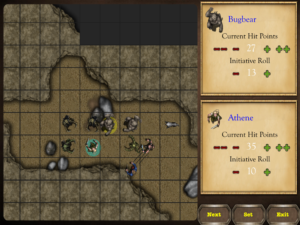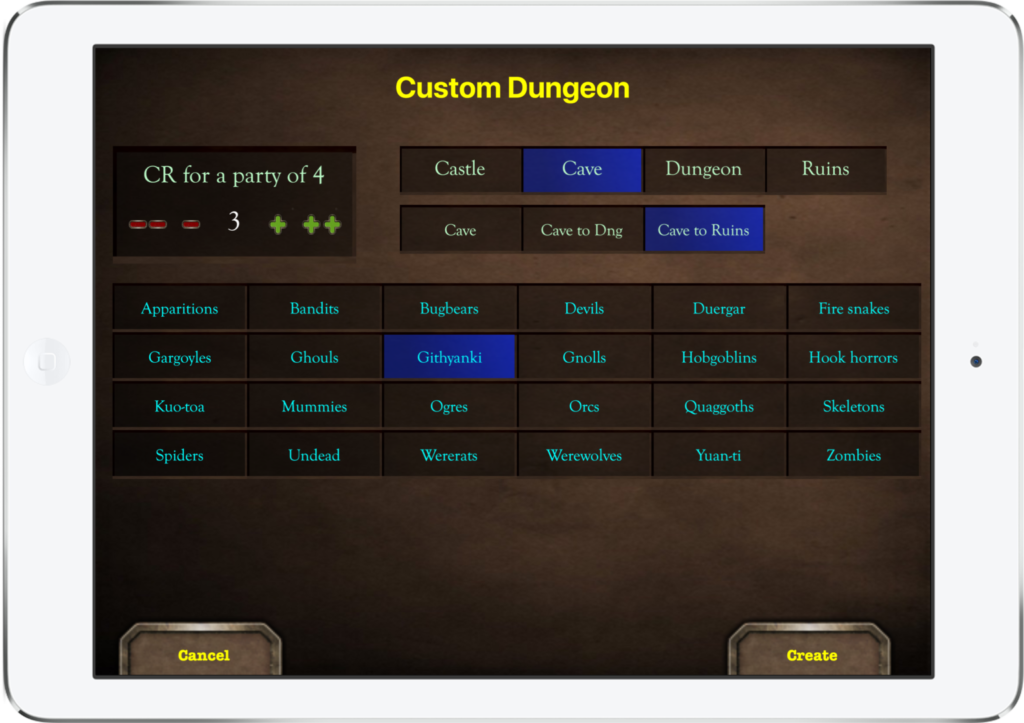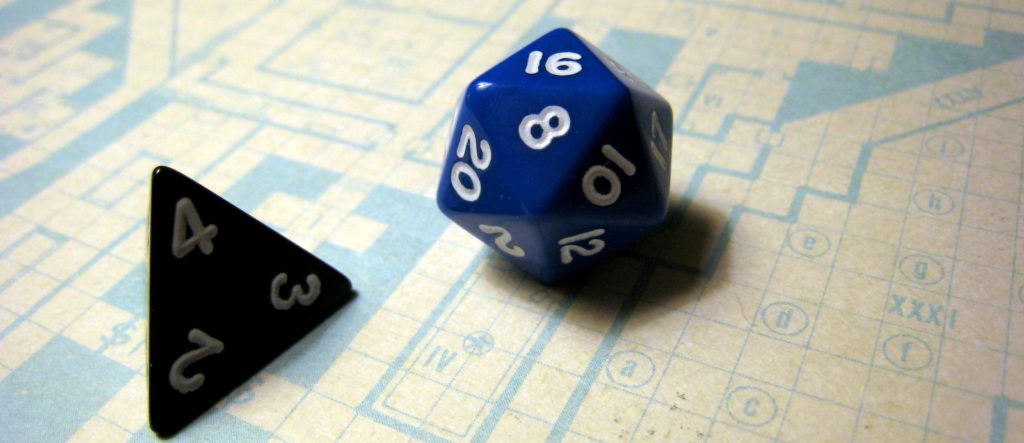Despite what you may have heard, it’s quite possible to play Pathfinder or D&D alone. In fact, for some, the only choice at getting into D&D or Pathfinder might be to play solo. For others that have friends that play but don’t have friends who want to DM, there’s no need to go without getting your fix. Or perhaps someone in the group wants to DM but doesn’t want to spend all of their free time drawing up maps and plotting out dungeons. Being the DM doesn’t have to be massively time-consuming.
So how do you get started?
Choose Your Random Map Generator
A cornerstone for playing a tabletop roleplaying game like D&D without a game master is the ability to create random maps. My friends and I used the tables at the back of the Dungeon Master’s Guide as a way to create random dungeons on the fly that could still surprise us, and rolling your own as you go is still a solid choice.
The problem with many random map generators is that they are designed for the DM and often don’t place monsters, treasures or traps on the map. This can be a problem if you are hoping to generate a homebrew adventure without a DM.
Another issue with rolling your own dungeon or using standard generators is the lack of cohesion. When you explore a cave filled with goblins, you expect it to have a lot of goblins. Rolling on random tables rarely gives you this cohesion.
Endless RPG: The Random Dungeon Generator for D&D 5e and Pathfinder 1e
Endless RPG was created to allow the flexibility to play without a dedicated DM by having an iPhone, iPad and Android device present a random adventure in a player-friendly manner. The app plays like a turn-based role-playing game with a fog of war that you must uncover as you explore and hidden encounters, treasures, traps and other secrets. The only difference: Endless RPG tells you what you find but all of the actual dice rolling is up to you.
The app allows you to choose a quick mission or customize a map. Customizing allows you to choose the area type (dungeon, ruins, tower, etc.) and the target number of encounters. The default encounter size is seven, which is the recommended amount from the Dungeon Master’s Guide. These are ‘themed’ dungeons, which means you can choose an enemy like orcs and have it mostly populated with that enemy, which is great when coming up with your own stories.
- Download Endless RPG for Windows PCs
- Download Endless RPG for iPhone/iPad from the App Store.
- Download Endless RPG on Android devices from the Google Play store.
- Download Endless RPG for Mac OS
Endless RPG supports both 1st edition Pathfinder and DnD 5e. You can even customize the monster manuals used for populating the dungeon.
The Back of the Dungeon Master’s Guide
Rolling your random dungeons on the fly is still a great way to do it. Creating a random dungeon by rolling on the tables in the DM Guide’s appendix can take a little getting used to, but it provides a really unique bonus: you never really know what is around the next corner.
Premade Maps
An alternative to rolling completely random dungeons is to use premade maps and have one person in the group play the pseudo-DM by placing monsters and treasures. The tables at the back of the DM guide can help out with this as well. That person then allows the other players to guide where the party goes on the map without offering suggestions or hints.
How to DM Yourself in D&D or Pathfinder
Before beginning combat, try to come up with a basic strategy for how the character or party is going to handle the combat. But instead of jumping right into the dice rolls, do the same thing for the other side. How would they fight your party? If it’s a bunch of goblins, they’ll probably just charge right in with the most basic tactics, gnolls might be more clever, demons might be exceedingly clever, etc.
Remember, the threat of death is what makes the game so good, so be fair. Also, don’t be afraid to use the dice for more than just standard dice rolls. If you are fighting a spell caster, come up with a percentage chance of them casting a spell or roll a dice to see which spell they cast. Is that goblin taking a beat down? Roll to see if they decide to flee!

The fun part is coming up with some basic rules, such as cowardly creatures running on a roll of 6 or less on a d10 if they are badly injured while more courageous (or stupid!) creatures only run on a roll of 2 or less.
Also, keep in mind that Endless RPG cannot take into account every situation. If you cast a spell that should have detected a trap that you subsequently stumbled over and failed a perception roll, feel free to alter events to fit that initial spell!
If you are playing using the back of the DM’s Guide to build your dungeon, remember that you can run into the ‘fog of war’ and explore new parts of the dungeon while you try to flee. This can end disastrously, but it can have its own surprises.
How to Play D&D/Pathfinder In A Small Group Without a DM
Games like D&D and Pathfinder can be a lot of fun even when you only have two players or a very small group. Often, the biggest thing holding a group back is when no one wants to be the DM. But don’t let that stop you! Gatekeepers will sometimes hold up a stop sign and say tabletop roleplaying games can only be played with a dedicated game master or certain number of players, but the truth is that you control the game. And so long as you can make it fun, you are playing the right way.
This is where Endless RPG can really shine. I designed it to allow solo or small groups to experience exploring dungeons, ruin, towers, etc. without a DM. The fog of war keeps things fresh and you can create entire stories and use the generator to fill in the details. Because it can roll up a variety of maps, you can explore a tower for clues to the whereabouts of the lost child, then delve into a cave to find him or her.
How to Deal With Combat Without a DM?
A great way to deal with combat is to take turns on who is the DM from one encounter to the next. This is a way of keeping everyone fair and spreading out the work. As an alternative, one player can DM most of the monsters in the encounter and another player can DM the monster(s) targeting that player’s character.
Another way of doing it is to choose one player to be the primary dungeon master for combat. Everything said above applies, but this player can do more strategizing for the encounter. The key is to let your character step back and be more of a DM’s NPC — aiding combat, but not leading it. And then see what kind of ass-whooping you can do to the party!
It’s a good idea to use dice to see what party members are targeted by specific creatures in the encounter. This can help curb any arguments about a certain character getting targeted too much. But play within the tactics of the encounter: ogres are dumb, drow elves are smart, etc.
The tips for playing solo also apply. Try using the dice to randomly determine what the enemy does, which spells they use, what skills they employ, etc.
Adding Story to the Adventure
One of the best aspects of tabletop roleplaying is the story. And you don’t need a dedicated DM to have great stories. Random dungeon generators can help augment the game when no one wants to be the full-fledged DM, but someone volunteers to be the story master.
But you don’t need a single story master. The story can also be generated by everyone. This can be done in a continue-the-story fashion where each player in turn comes up with the story of an adventure, hopefully one that moves the story as a whole along. Or you can use some random generators to come up with enemy ideas, plot ideas, etc. Here are a few great generators:
The Random Adventure Generator on Donjon is a good way to kickstart a story and all of the websites have random goodness that can add to the adventure.
How about adventuring in a city? The Dresden Files RPG had a great way of dealing with the city: each player takes a section to control as a DM. This spreads out the hard work and still allows for some impressive roleplaying within a city. Random generators can then fill in some of the holes.
More Resources for Playing Without a DM
How to DM Pathfinder or D&D Without Putting In as Much Work!

Do you want to DM but just don’t have the time? You aren’t alone. There are plenty of people who love to tell a great story but don’t really love drawing out detailed maps.
Endless RPG can provide a backbone of content that lets you tell your story. You can game master the campaign, control what happens in town and with NPCs, and when you need a tower full of orcs or a ruin with skeletons, Endless RPG can provide it. Because the app lets you choose a monster group as well as a setting and a challenge rating, you can tailor the adventure to your story.
The app also allows you to edit the randomized map to add, move or delete encounters and treasure. You can even add your own custom monsters and treasure. You can also move or delete traps and events and move some objects around on the map and insert custom messages for the party, useful when letting the character explore the map from within the app rather than just using it as a guide.
It’s a good idea to familiarize yourself with all of the monster groups available as enemies by going to the Custom screen in the adventure map and tapping through the challenge ratings. The available enemy groups will change with specific CR, so once you hit 20th, you’ll have a good idea what you can throw at the party.
Read More About Endless RPG: The Random Dungeon Generator for Players (and DMs)
About the Author: I was introduced to D&D at 11 years old when I got the original basic set for Christmas. I quickly moved on to Advanced Dungeons and Dragons. I’ve always been fascinated with random dungeons and have developed many tools for creating random maps over the years.
